Woodworking has been around since man learned how to cut trees and has since evolved in different ways, especially with the different types of woodworking tools available today.
There are so many modern tools for woodworking and carpentry projects today that it can be confusing to pick out the essential ones among the lot.
Based on personal experiences, however, we’ve tried to pick out 44. 44 tools is a lot for a beginner woodworker, but as you gain more experience and acquire more tools, it will undoubtedly be worth it when you have a solution for every problem in the workshop or on the job site.
These tools will not only make your job as a woodworker easier, but they will also make it more fun. They also make your job more professional because pro tools produce professional results.
So, here are 44 modern tools for woodworking and carpentry for you to choose from. I will not advise that you get every one of the tools listed here, but to check and find the ones that are suitable for the type of projects you carry out.
It’s also likely that you already have some, so go through and take note of the ones you may need.
We’ll start with the hand tools.
Table of Contents
Hand Tools for Woodworking
Pocket hole jigs
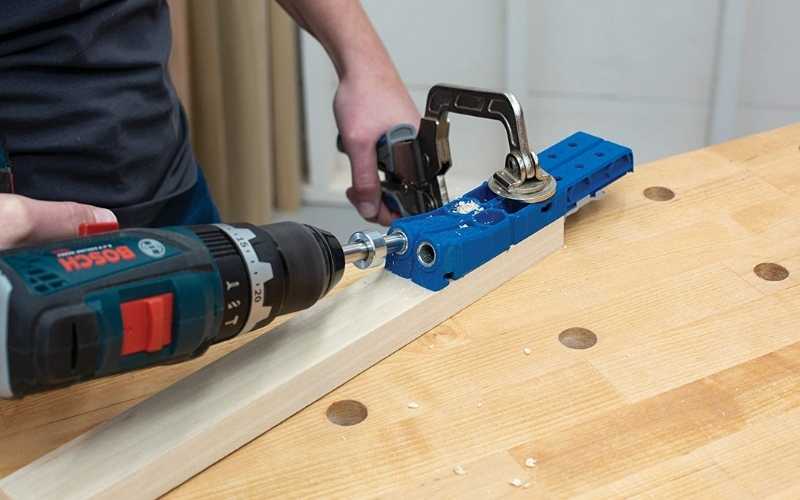
Talking about modern tools for woodworking, one of the first that comes to mind is the pocket hole jig for making pocket hole joinery.
Pocket hole joints make it very easy to assemble pieces of wood together very fast and easily using pocket screws, and a pocket hole jig makes it even easier for you to drill these holes in the wood pieces you plan to join.
There are different types of pocket hole jigs from different brands, but I believe Kreg makes some of the bests ones I’ve found. They have different sizes of jigs for this singular purpose, and they’re all very effective for making these pocket holes.
1-2-3 Setup Blocks
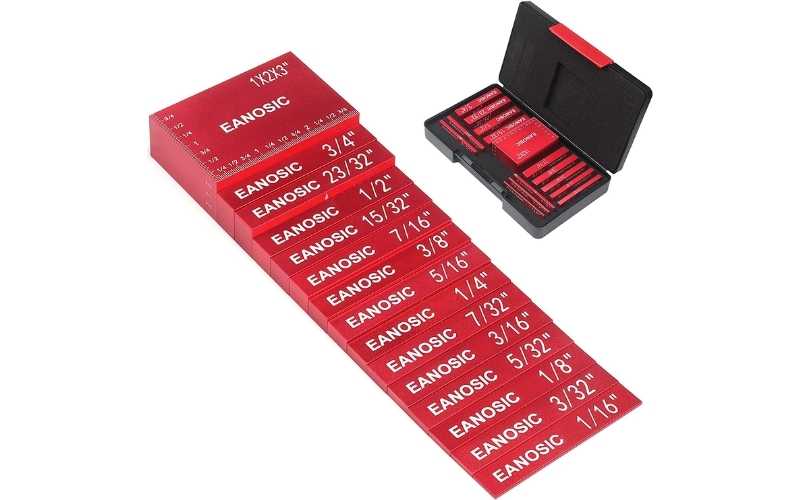
If you’ve never used a 1-2-3 setup block, then you’re missing one of the most important tools for taking quick measurements when carrying out woodworking projects.
1-2-3 setup blocks are metallic blocks used for quickly setting up and aligning the height of blades, fences, bits, and other cutters to make cuts accurately and precisely without using other measuring tools that might consume more time.
A 1-2-3 block is 1 inch thick, 2 inches wide, and 3 inches tall, and it weighs about 1 lb, which makes it quite heavy and stays put when you lay it down on a surface.
Because it’s perfectly square, it can be used to check if the fence of a jointer, a table saw, or any other tool is square or not.
Also, because it’s perfectly flat, it can be used to check if the cutterhead of a jointer is totally level with the jointing surface.
Each of the faces can be used to set the height or depth of a cutter, such as a saw blade, a dado insert, a drill bit, a router bit, or any other cutter.
When you get a 15-piece set of it like the one shown above, then you can extend the range of your measurements in 1/32-inch increments. The 1-2-3 setup blocks have many applications in the workshop. When you get it, your only regret will be that you didn’t get it sooner.
Right angle clamp
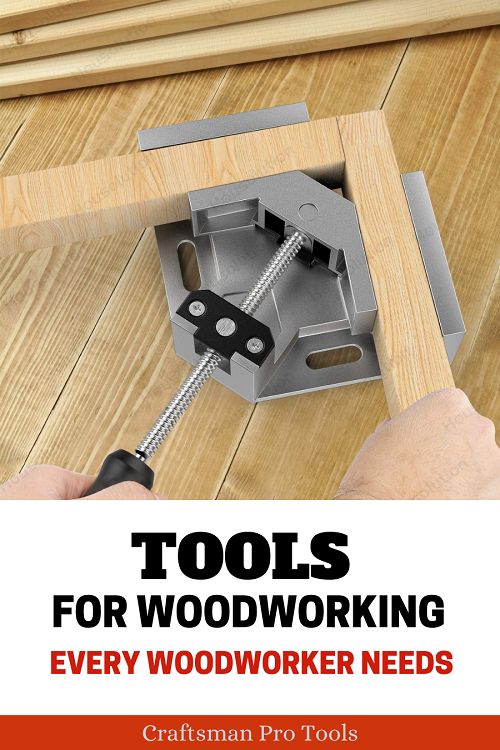
Joining two pieces of wood perfectly at right angles can be challenging to do by yourself because you’ll have to hold the two pieces together and try to join them.
It’s even more difficult if you’re trying to nail them together using a hammer.
With the right-angle clamp shown above, you can join the two wood pieces with ease after clamping them together.
The right-angle clamp is a vital tool you should have in your toolbox if you carry out DIY woodworking projects.
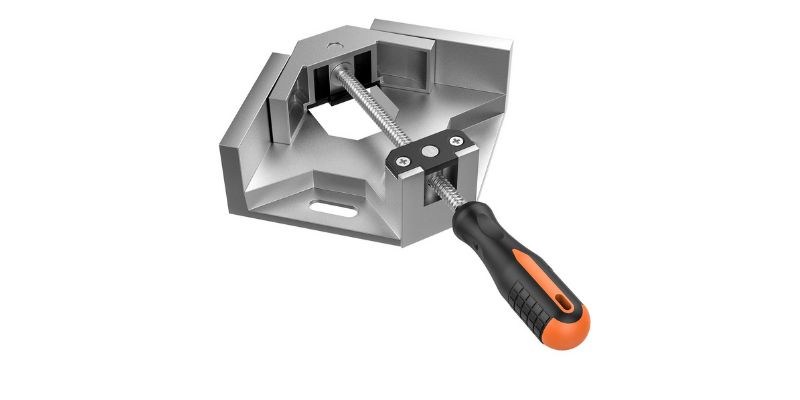
Center scriber
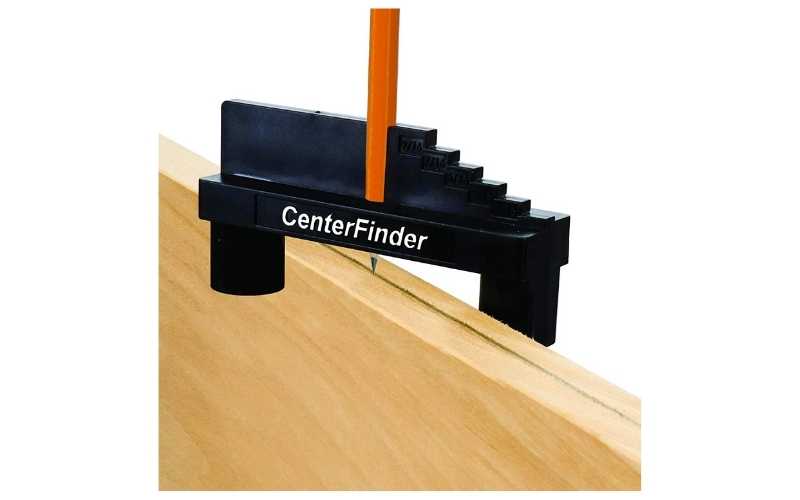
Sometimes, you need to find the center of the wood you’re using for your project. Eyeballing is not advisable if you need maximum precision and want to do a quality job.
In this case, the woodworking tool you need is a center scriber. With it, you can find and mark the center of the wood pieces you use for your projects.
Measuring tape

In order to carry out your woodworking projects, you need to measure each piece correctly, which makes a good measuring tape essential in your workshop.
Multi-mark tool
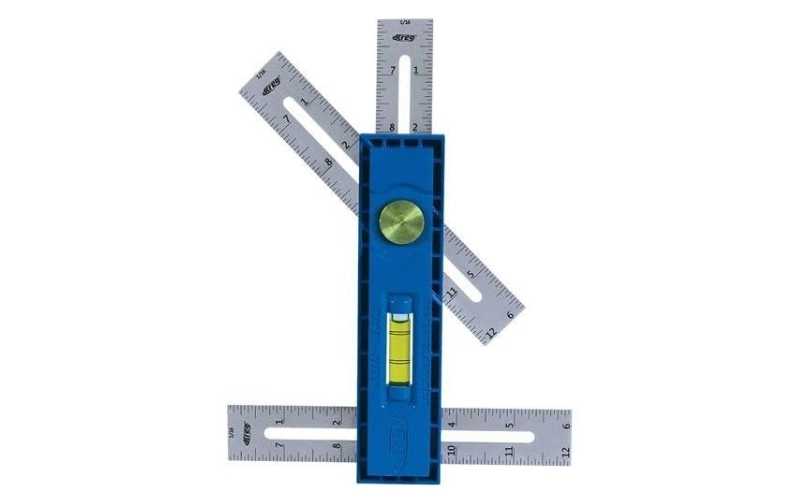
The multi-mark tool is a handy and multi-purpose tool you can use during your woodworking projects. It can be used for squaring, leveling, and even transferring measurements from one workpiece to the other.
Digital protractor
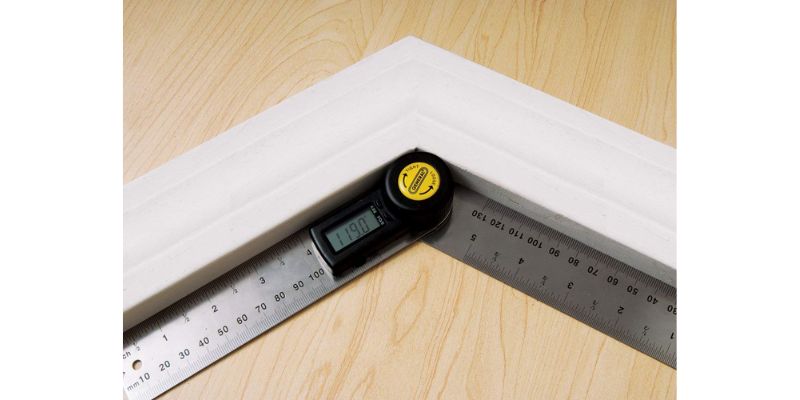
You can find and measure angles accurately using this digital protractor. With it, you can adjust the angles of your table saw blade, bandsaw, and miter saw blades to make accurate bevel cuts.
Multi-angle measuring ruler
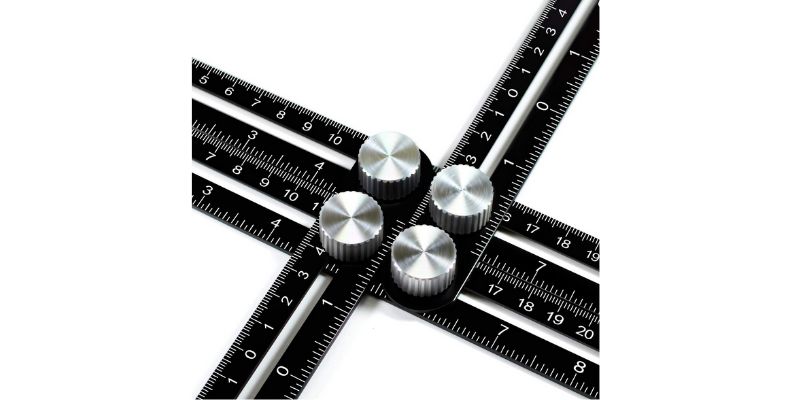
You can measure multiple angles and mark and transfer templates with the multi-angle measuring ruler.
Wood moisture meter

Want to know the amount of water or moisture in the wood you’re trying to buy in the lumberyard? Then you need a moisture meter. It’s a very important tool you need for your woodworking projects because knowing the moisture content of the wood you use for your projects is vital.
As wood dries, it changes its shape in different ways. It can shrink, twist or even split. When you use wood with too much moisture than ideal, then you run the risk of running into serious problems in the future when the wood starts drying and changing its shape.
So, seriously, get a moisture meter and learn about the minimum moisture content of the lumber for your projects so you don’t create something that ends up breaking or getting damaged in the future.
Lock mortiser
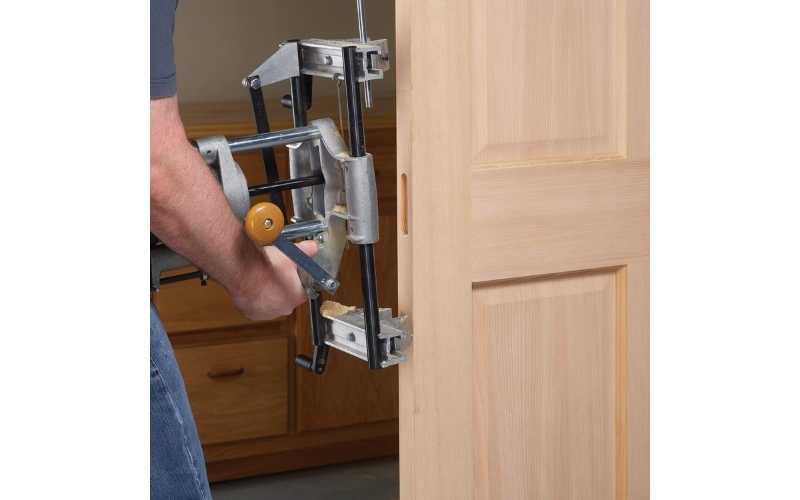
Ditch the mallet and chisels and get a lock mortiser like this one from Porter Cable, and mortising doors for door lock installations will never become a tedious task for you anymore.
Although people still mortise doors with basic hand tools, this lock mortiser puts that in the past by helping you create these mortises effortlessly.
This one from Porter-Cable features a powerful 11 Amp motor capable of producing 27500 rpm of speed, allowing you to drill into and create mortises even in the hardest wooden doors.
With it, you can cut mortises up to 7 inches long, 1-1/4 inches wide, and 4-3/4 inches deep in any door, no matter how thick it is. This is a modern woodworking tool I believe will definitely make the life of any woodworker, carpenter, or cabinet maker way easier than it used to be.
Edge ruler
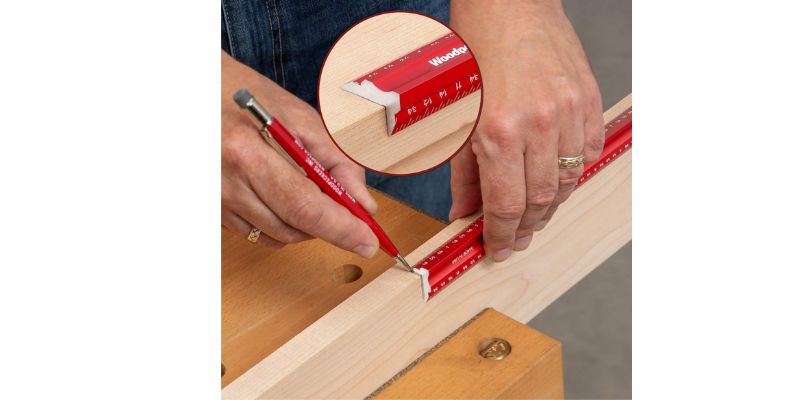
An edge ruler wraps around two perpendicular edges of the wood you’re marking and gives you an accurate scale on both sides of the wood.
Drawer slide jig
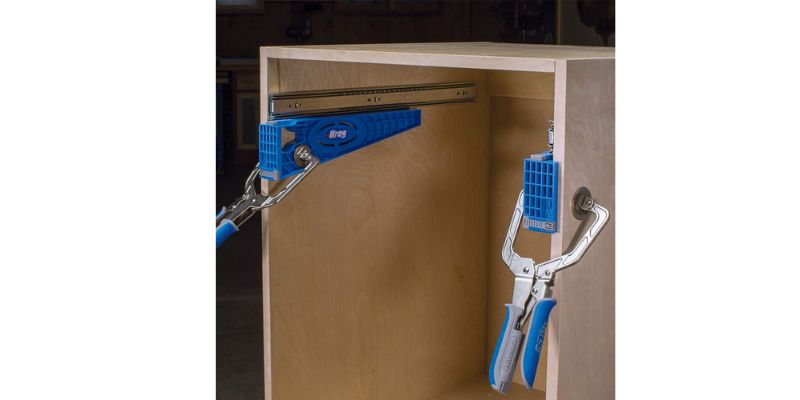
If you find it difficult when installing drawer slides in your cabinets, then you need a drawer slide jig. With it, you can install drawer slides that fit perfectly and slide smoothly every time.
Modern clamps
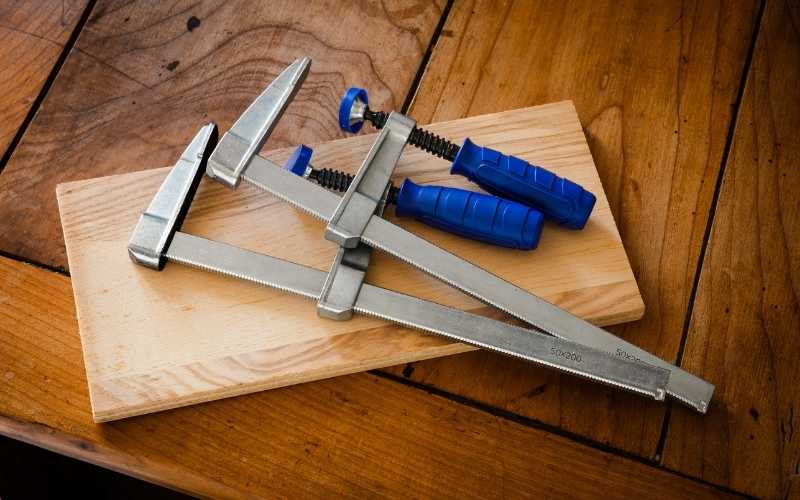
Woodworking clamps are a necessity in any workshop. You need them for clamping pieces together for gluing, drilling, and several other tasks.
Japanese pull saw
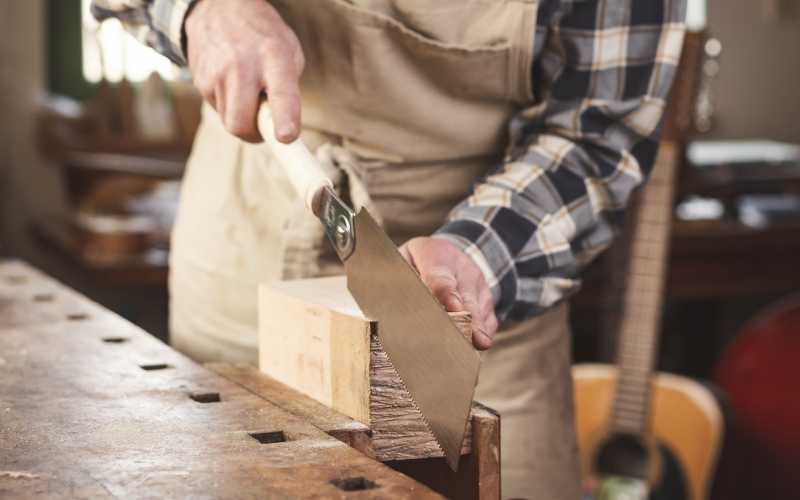
It doesn’t scream modern when you look at a Japanese pull saw. In fact, its use dates back several centuries ago. However, it has many applications in the modern workshop.
The Japanese pull saw, of course, originated from Japan, and it’s a saw that cuts on the pull stroke in contrast with most western saws that cuts on the push stroke.
There’re many advantages when using the Japanese pull saw for making cuts. One of the most important ones is that it has a very thin kerf which makes it ideal for making fine intricate cuts. For instance, when cutting joinery pieces like the tenon of a mortise and tenon joint.
The pull saw also cuts faster and requires less elbow grease when cutting with it. Unlike western-style hand saws, the pull saw’s long slender handle allows it to be held with two hands when necessary to facilitate the cut.
Because the kerf is so thin, it bends easily, making it very ideal for making flush cuts in awkward angles where the blade does not align properly with the cut. For instance, when cutting protruding dowels off a joint against a wide flat surface.
Workbench

Working from the floor is never an option if you want to carry out woodworking tasks or projects effectively.
Having a workbench is essential. You can place and clamp your wood stock to it so you can work comfortably.
Tasks such as sanding, sawing, gluing & clamping, chiseling, drilling, and other tasks are better carried out on a workbench.
Power Tools for Woodworking
The following are the power tools you can use for your woodworking projects.
Thickness planer
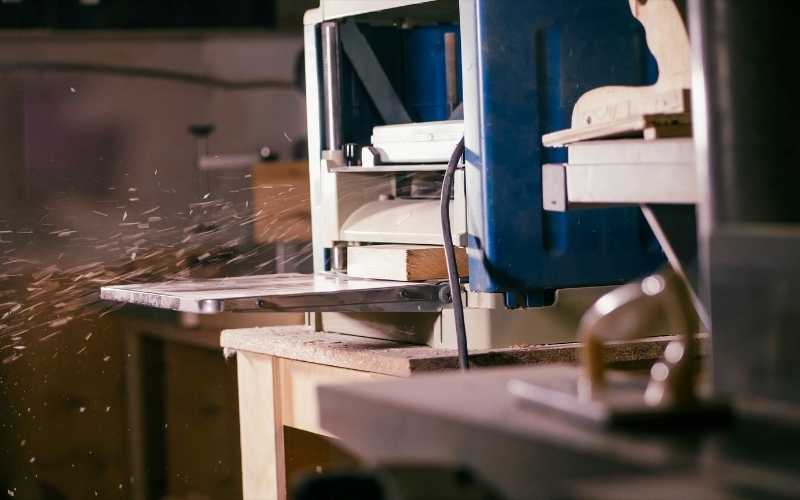
Although not very modern, I believe a wood thickness planer is one of the most important tools you should have in your workshop as a woodworker or carpenter.
Lumber that is already milled and dimensioned is quite expensive. Rough lumber, on the other hand, is relatively inexpensive.
If you have a thickness planer machine, you can plane and mill the rough lumber you bought to the exact size, thickness, and surface smoothness you need for your project.
Miter saw
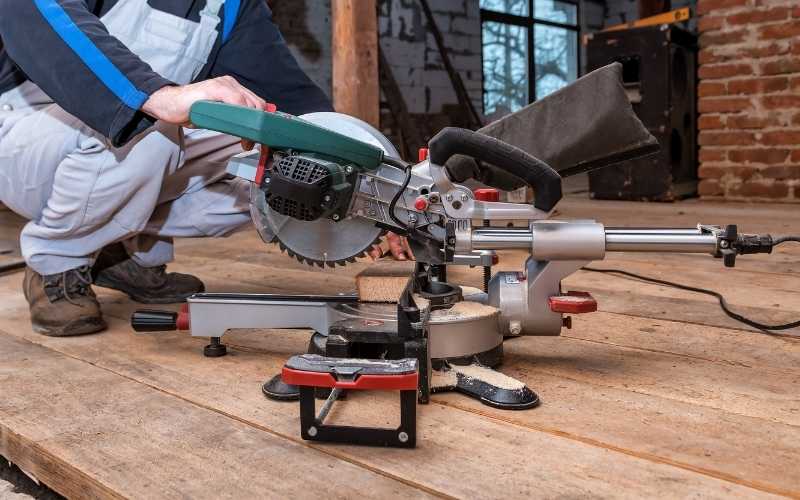
The best tool for making crosscuts is a miter saw. You can use it to crosscut 2x4s, 2x6s, crown moldings, and baseboards.
If you’re getting tools for your woodworking projects, a good compound miter saw should definitely be one of the first ones you get.
Circular saw
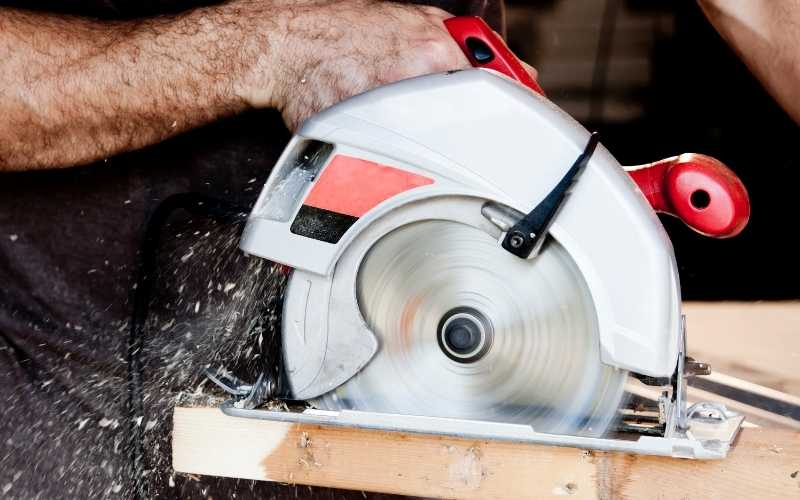
A circular saw can be used for making crosscuts and rip cuts easily. It’s one of the first power tools I’d recommend for anyone starting as a beginner woodworker.
It’s very important because you can use it to make any type of cut on wood, including cross cuts, rip cuts, and even bevel cuts. Just ensure you learn how to use it first, especially from someone with experience, before handling one.
Table saw
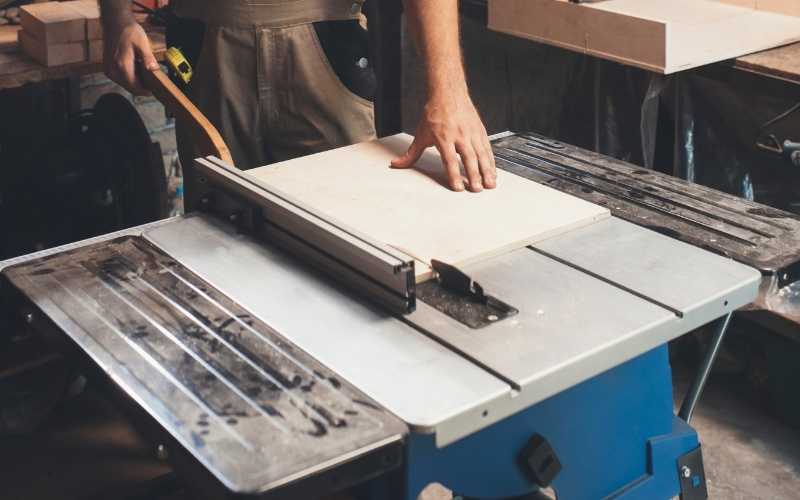
Although they’re best for making rip cuts, you can make any type of cut on a table saw. Rip cuts, cross cuts, bevel cuts, and even dadoes.
If you really want to up your game as a woodworker, you need to have a table saw in your workshop. If you already have one, then check out this 16 table saw accessories you can use to upgrade it and improve its performance.
Power drill
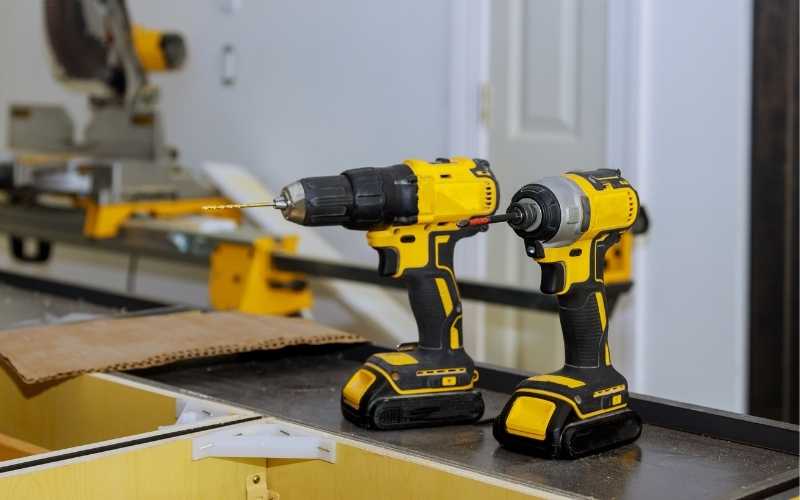
Power drills are essential tools for any woodworking shop. They’re used for drilling holes, driving screws, mixing liquids, and performing many other essential tasks in the workshop.
Band saw
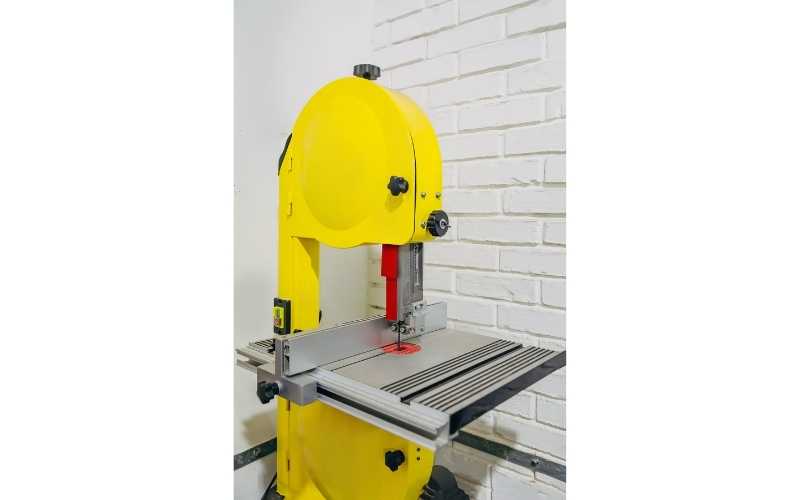
It’s quite easy to overlook a bandsaw, but if you’ve made use of one before, you’ll get hooked. It consists of a long, looped, slender, and sharp-toothed blade stretched between two metal wheels.
When used properly, you’ll find it to be the safest saw in your workshop because, unlike a table saw, it doesn’t cause kickback.
You can use it for cutting curves, ripping boards, making veneers, resawing, and so much more. There are bandsaws for woodworking and ones for metalworking.
Jig saw
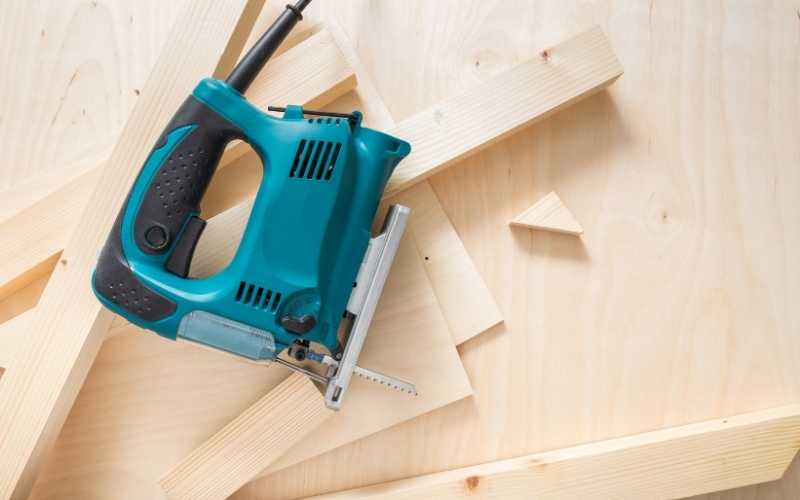
Just like a band saw, you can also use a jig saw to cut irregular shapes in wood.
Unlike the bandsaw, which is a stationary tool, a jigsaw is a hand tool that requires you to take control of the saw and direct it through the cut while the material or wood remains primarily stationary.
Reciprocating saw
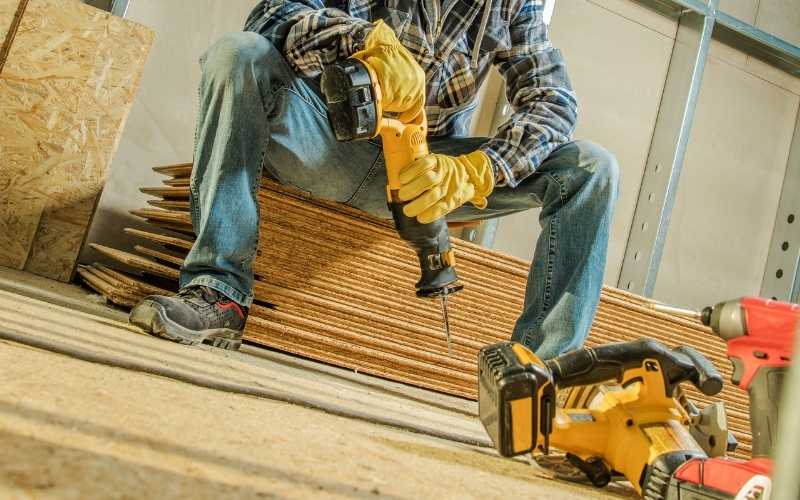
Most likely, your projects will require you to cut other materials apart from wood. That’s where you need a reciprocating saw.
It allows you to cut through different types of materials. All you have to do is switch the blade depending on the material you’re trying to cut.
Router tool
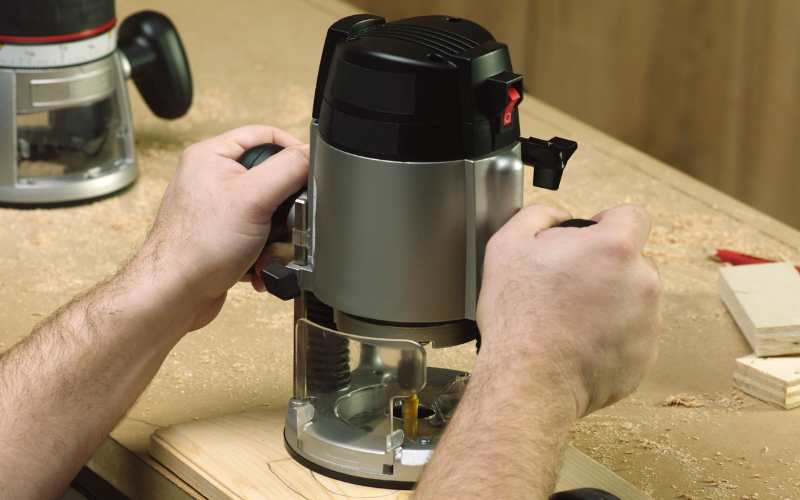
A router tool is one of the most versatile tools for woodworking you can use during your project. It’s used for routing or hollowing out an area in a relatively large material like wood or plastic.
There are many uses for the router tool in the wood shop, such as edge routing, cutting patterns, and cutting dadoes for making dado joints.
Router table
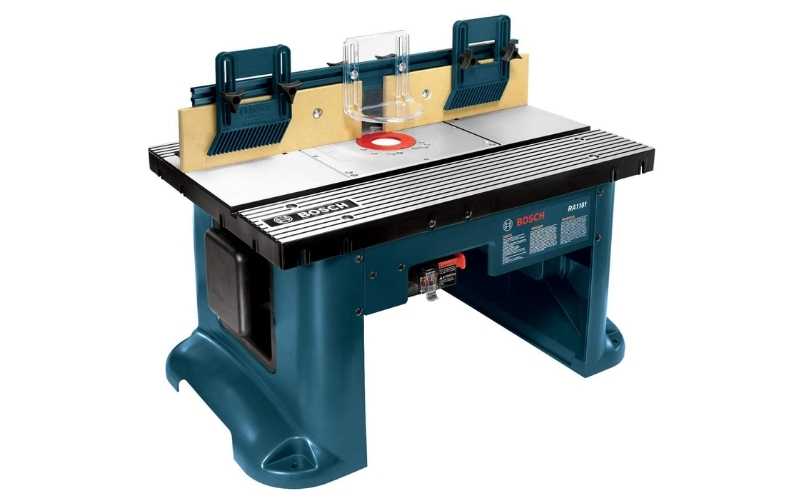
A router table allows a woodworker to keep the router tool stationary while feeding the workpiece through the rotating bit.
It helps increase the versatility of a handheld router tool, thus making it possible to carry out certain types of tasks that wouldn’t be possible with the router tool alone.
For instance, very small workpieces cannot be routed with the router tool alone, but when you mount the tool on the router table, you can use a push block to guide the workpiece through safely.
Electric hand planer
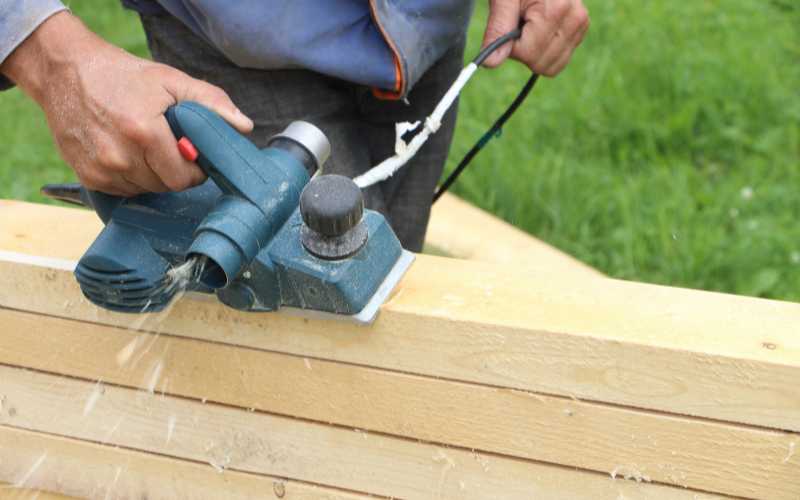
When you’re trying to plane a wood stock that a thickness planer machine can’t accommodate, then you use a hand planer. There are electric hand planers and simple hand planes.
Generally, if you can’t feed it through a thickness planer, then you need a hand planer to plane it to the correct thickness or flatness.
A hand planer is especially ideal for already assembled furniture because you can’t pass assembled furniture pieces through a thickness planer machine.
Instead, you can locate all the inconsistent or rough parts of the furniture and then plane and sand them to your desired thickness and smoothness using a simple portable hand planer tool.
Wood jointer

Planing warped or twisted boards with a thickness planer will still return a warped board, even though both sides of the board are smooth.
With a jointer machine, you can flatten one side of the board, removing the warping, twisting, and other defects/irregularities of the wood so that when it finally goes through a thickness planer machine, both sides come out flat and parallel to each other.
Rotary tool
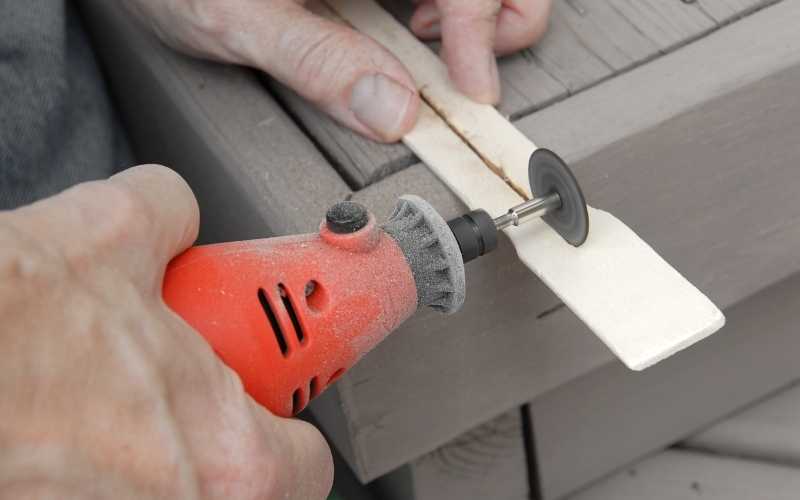
A rotary tool has many woodworking applications. You need it if you need to make tiny cuts, sand small areas, carve and engrave the wood you use for your project.
They’re quite inexpensive, and you can usually get one under 40 or 50 bucks. However, the one by Dremel shown in the picture above is more expensive because of its quality, versatility, and ease of use.
Drill press
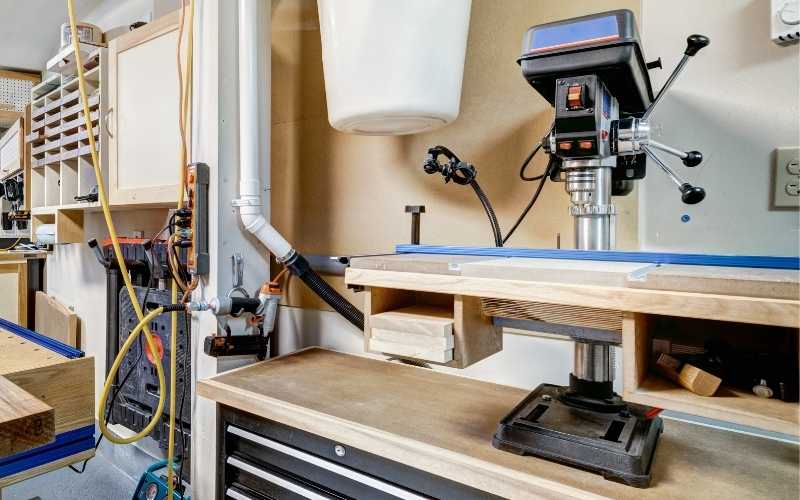
The drill press has a chuck where you can attach different types of bits for drilling holes or driving fasteners. Of course, you can always buy a portable power drill for your projects, but the stationary drill press helps improve the accuracy of your work.
With a regular hand drill, it takes a lot of skill and steady hands to drill vertically at 90 degrees into the workpiece. With a drill press, however, you only need to clamp the workpiece to the table and lower the rotating bit into it, and it will make a perfect 90-degree hole every time.
Apart from 90 degrees, you can also drill holes at other angles accurately with a drill press.
Random orbital sanders

A random orbital sander is arguably the best type of sander you can use for sanding wood and other materials.
It uses a cylindrical sanding pad that rotates and oscillates to help produce the best finish on your workpiece. Even though it’s rotating, the oscillation eliminates any swirl marks and sanding patterns, thus leaving a perfectly smooth surface for you to work with.
Reciprocating spindle sander
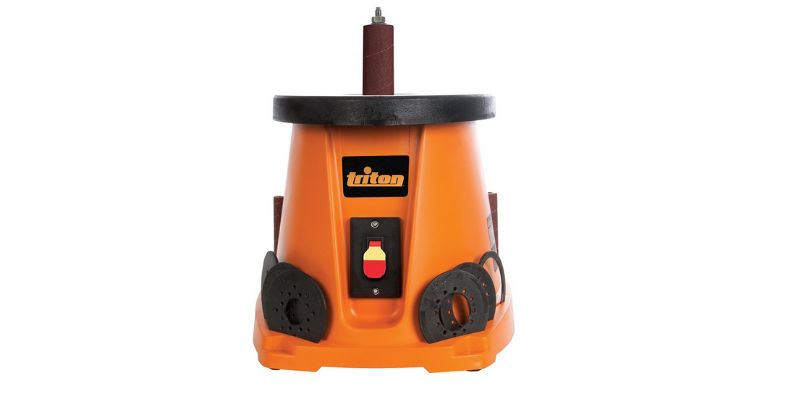
If you want to sand curves in wood, a reciprocating spindle sander is one of the best tools you can use for that.
After cutting curves or shapes on your workpiece with a bandsaw, with the help of the reciprocating spindle sander, you can smoothen out those curves and remove any bandsaw marks left on the workpiece.
Belt sander

Of all the different types of sanders, belt sanders are the most aggressive of them all. You can damage your project easily if you’re not careful when using a belt sander.
They’re best for rapid removal of stock and smoothing rough boards. If you’re making a wooden floor from rough boards or reclaimed lumber, you’re surely going to need one.
Framing nailer
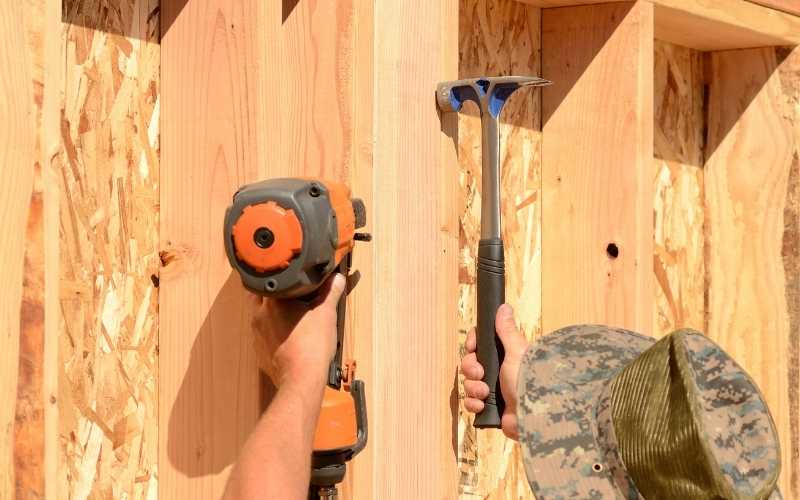
Talking about tools for woodworking, a framing nailer is one of my favorites. Using a hammer to nail pieces of wood together can be quite stressful and time-consuming.
With a good framing nailer, however, you can cut that time to the barest minimum and save yourself a lot of energy you would have spent swinging a hammer.
Using a framing nailer also increases the accuracy of placing nails on your stock and prevents it from getting damaged.
When you use a hammer, if you swing and miss, you damage your stock or workpiece, but with a framing nailer, you don’t swing at the nail. Instead, you only place the nailer tip on the workpiece, compress it and pull the trigger, and the nailer will fire it in within a split second.
Brad nailer

A brad nailer allows you to nail tiny 18-gauge nails easily. It’s a very important tool to have if you’re involved in trim carpentry or cabinet making.
You can use it to hold workpieces together delicately before adding screws to join them permanently. For example, when building cabinets, you can use a brad nailer to temporarily hold the cabinet parts together to form the cabinet’s structure. Then, you can use screws to hold them together permanently.
It’s also used for installing moldings and baseboards.
Benchtop mortiser
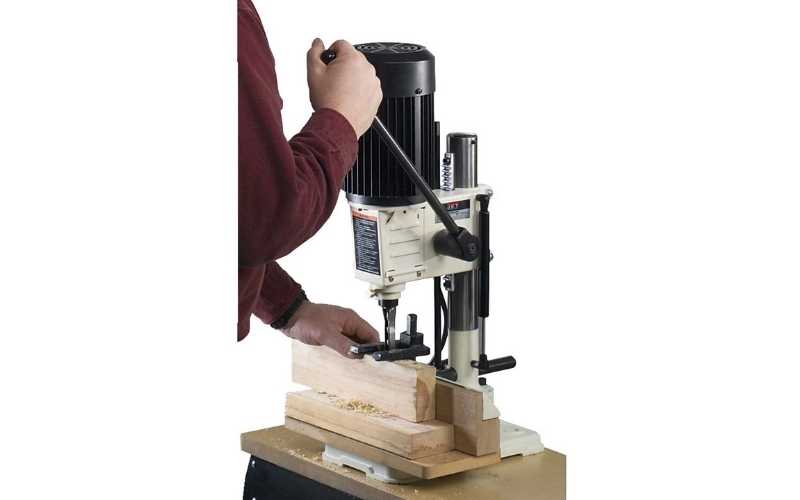
Cutting a mortise and tenon joint can be quite difficult using basic woodworking tools like mallets and chisels. With this benchtop mortiser, however, you have an automated way to cut out your mortises with ease and accuracy.
The benchtop mortiser features a power motor connected with a chisel bit, and you operate it just like a drill press to cut mortises in your stock. You can choose and switch to different types of chisel bits depending on the size of mortise you want to cut.
Overall, the benchtop mortiser is a handy tool for carrying out woodworking, furniture, and cabinet-making projects.
Drum sander
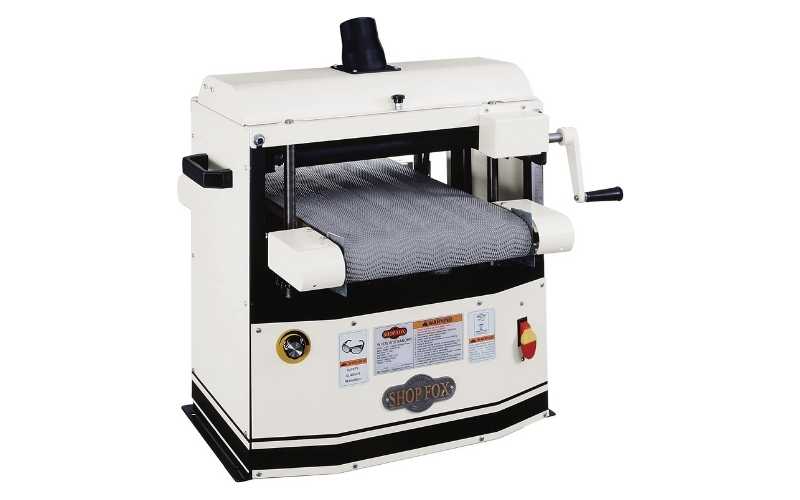
Drum sanders are pretty expensive, but if you want to sand down large wooden planks in one go, they’re the best option.
Radial arm saw
You won’t find these in most workshops today because they’re not as popular and modern as they used to be when it was first invented, but the radial arm saw is still one of the most versatile saws you can ever use today.
Although its main purpose is for making crosscuts, it can be used for many other tasks, such as cutting dadoes, rabbets, tapering, and so much more. It’s not popular, but it works exceptionally well in the hands of a good craftsman.
Dovetail cutting jig
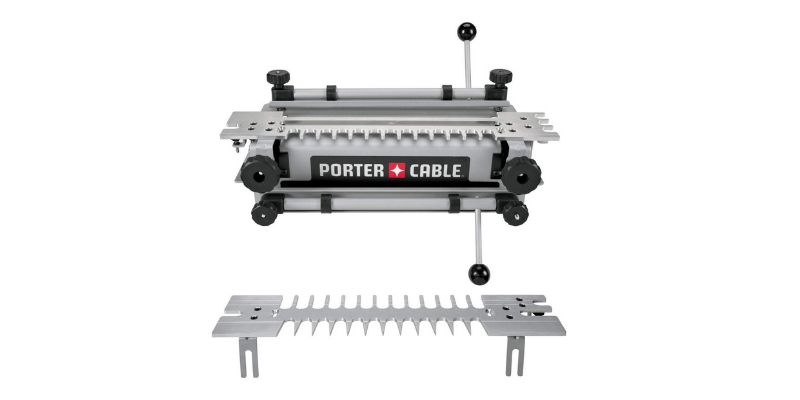
A dovetail joint is a very crafty-looking woodworking joint you can use for your project, and it’s solid too, but cutting it by hand can be pretty difficult. Hence the need for dovetail-cutting jigs like the one shown above from Porter Cable.
It’s a handy jig that will simplify your work when cutting dovetails for making different types of joinery for boxes, drawers, and furniture pieces.
Beam cutter
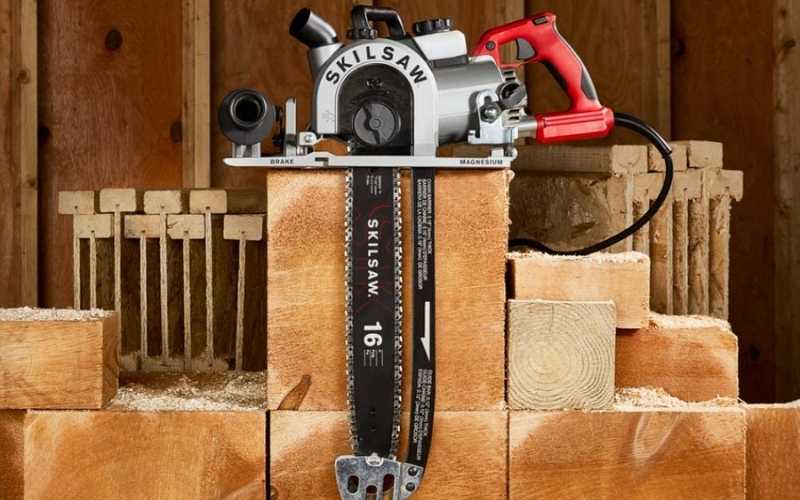
A beam cutter allows you to cut thick beams or huge stocks of wood in one go. Cutting these huge beams and stocks of wood on any other saw, like a table saw or a miter saw, is impossible.
That is why having this beam cutter is necessary if you work with stocks of this size. If you’re talking about modern tools for woodworking, this beam cutter definitely makes the list.
Chain mortiser

Just like a benchtop mortiser, a chain mortiser allows you to easily cut mortises in your wood stocks. With the chain mortiser, however, you get to cut mortises in very thick stocks of wood, like beams for timber framing and logs for log home building.
Shop vac
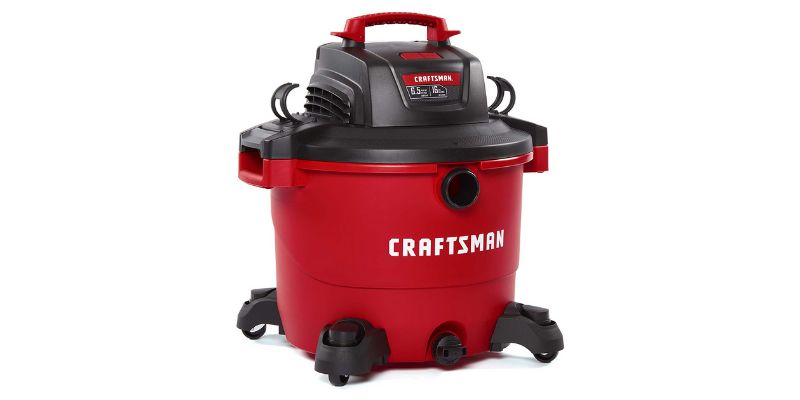
Most woodworking projects like planing, jointing, and sanding always produce sawdust in large quantities. Although there are many uses for this sawdust, it can easily mess up your shop and project if it’s not properly collected and contained. With a shop vacuum connected to your power tools, you can contain the sawdust as soon as it’s produced, ensuring you keep a clean working environment.
Lathe machine

If you love turning wood into different shapes and objects, you should already be familiar with the wood lathe. You can turn any wood blocks into decorative pieces if you know your way around the tool. Hence, it’s one of the best tools you can use for shaping wood.
Biscuit joiner

Biscuit joints are one of my favorite woodworking joints, and creating them can only be done when you have a biscuit joiner in hand.
Air filtration system
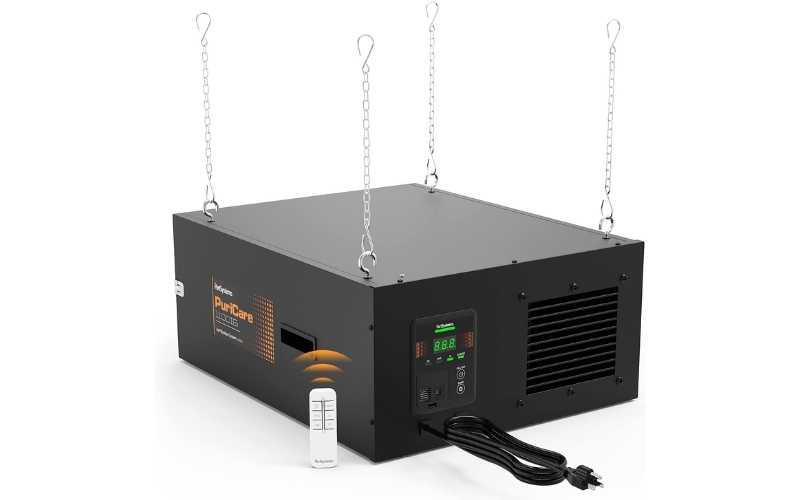
No matter how complex and efficient your dust collection system and ductwork is, some of the dust produced in your workshop will inevitably escape into the surrounding air.
Of course, wearing a dust mask can help prevent you from breathing this sawdust-contaminated air into your lungs, but one way or the other, there’s a chance that you’ll still breathe in this air. That’s why an air filtration system is essential in every woodworking shop.
Although this might not be an actual tool for carrying out any woodwork, it performs an essential task of ensuring the air in the workshop is clean from tiny airborne sawdust that escapes the dust collection system.

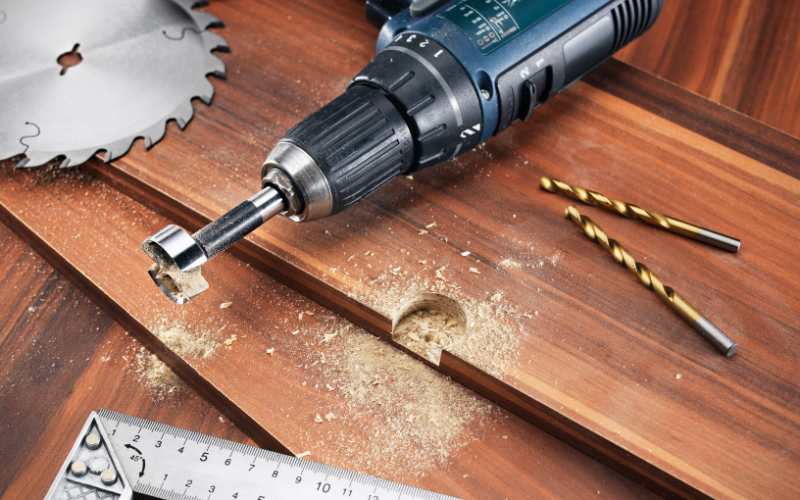
Thank you for a well organized index and thorough tool descriptions.
You’re welcome. I appreciate your feedback.
Bright very useful content.
Hello Vijay,
Thanks for stopping by. I’m glad you found this helpful.
Wow!
Really I liked it!!!
Thanks for the detailed explanation on wood working tools
I’m glad you found this useful.
very useful
Hello,
I’m Martin and would like to purchase tools . Kindly let me know if you have any in stock and the price and I would let you know the quantity I may order. Hope to hear from you soon.
Regards,
Martin.
Hello Martin.
We don’t stock or produce tools. We review them. Thanks for stopping by.
Well explained. Thank you very much for the post.
I’m glad you found this helpful. Thanks for the nice feedback.
Good job Bright, very informative
Cheers
James
Thanks James,
I’m glad you found what you’re looking for.
Am very glad I have found what I have been looking for…and very well explained..
Wow, so helpful for this wife who is trying to by her partner woodworking tools. Thank you!
Am glad to go through this page. very instrumental to us craftmen
These tools look wonderful! There is no doubt that they will make the work of wood workers easy and interesting. I see that as a major break through in wood workers environment. Please keep it up.
An interesting page.
Wonderful modern equipment described here.
One of the best articles I’ve come across offering a unique perspective not found in other articles on this subject. Just beginner-to-intermediate in woodworking, but from my experience so far the recommendations in this article are spot-on and cover tools not discussed in other articles.
Good job. Very impressed.